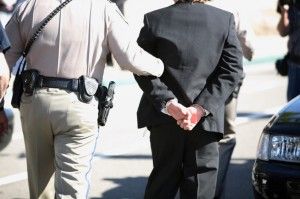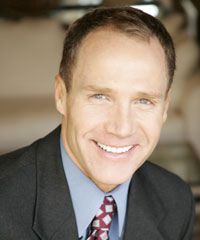 How Common are Wrongful Convictions?
How Common are Wrongful Convictions?
It appears no one wants to put an exact number on just how many wrongful convictions occur each year in the United States. The numbers vary widely; An Ohio study placed the number at approximately 10,000 Americans wrongfully convicted each year, while Justice Antonin Scalia believes that number to be miniscule—about .027 percent wrongfully convicted. In a 2014 article in the Proceedings of the National Academy of Sciences, Samuel Gross, a law professor at the University of Michigan, calls Justice Scalia’s estimate “silly.” Gross placed the number of wrongful convictions—for those on death row or serving life in prison only—at 4.1%. This number does not include the wrongful convictions for lesser crimes such as burglary, assault, drug crimes, sex crimes and many others. English jurist, William Blackstone, said in “Commentaries on the Laws of England,” published in the 1760’s, “It is better that ten guilty persons escape than that one innocent suffer.”
Top Causes of Wrongful Convictions
Only a fraction of criminal cases involve biological evidence which can be subjected to DNA testing; even when such evidence exists, it is lost or destroyed following a conviction. By deduction, then, there are many wrongfully convicted people who have little to no chance of ever definitively proving their innocence. The Michigan Innocence Clinic was the first of its kind to work on non-DNA exonerations; during this work several common causes of wrongful convictions have come to light. The most common cause of wrongful convictions is eyewitness misidentification, playing a part in at least 72%. Many of us believe our mind records events exactly as we see them. To the contrary, witness memory is like all other evidence gathered at a crime scene—it must be carefully preserved and methodically retrieved to avoid contamination.
Further, in some cases, witnesses are asked to identify a suspect from the back of a police car, hundreds of feet away or are shown photo arrays in rape cases where one photo (the person the police suspect) is marked with an “R.” Many witnesses, after learning more about a specific suspect changed their description of the perpetrator, while others only made an ID after being shown multiple lineups or photo arrays—and then only tentatively. Such things as the lighting where the crime occurred, the distance from which the witness observed the suspect, race, the presence of a weapon and the level of stress or trauma the witnessed experienced when seeing the suspect are known as estimator variables—variables which cannot be controlled by the criminal justice system.
Other common causes of wrongful convictions include junk science (forensics applied with little or no scientific validation), false confessions (from those who are made to believe confessing will be more beneficial than continuing to maintain their innocence), government misconduct (intentionally withholding evidence), taking the word of confidential informants or “snitches, the defendant’s criminal history, the age of the defendant, intentional misidentification and bad lawyering (overworked or inept lawyers who neglect to properly prepare for trial). It has also been found that prosecutor’s with a weak case will focus even more intently on the accused suspect rather than considering alternative suspects.
Notable Wrongful Convictions
While there have been many wrongful convictions, some are even more shocking than others, including the following:
- Kirk Bloodsworth was convicted of the rape and murder of a nine-year old girl in 1984—based on eyewitness account—and sentenced to death. After nine years in prison, DNA testing proved his innocence.
- After 14 years spent on Florida’s death row, DNA evidence cleared Frank Lee Smith of the rape and murder of an 8-year old girl; Smith died in prison of cancer before he could be released.
- Sally Clark was convicted and imprisoned for the alleged murders of her two sons; In 2003 her convictions were overturned, stating the deaths were of natural causes and evidence had been tampered with. Unable to recover from the trauma of the false conviction, Clark died of alcohol poisoning in 2007.
- Thomas Kennedy spent 15 years in prison after being falsely accused of raping his daughter. After nine years the daughter admitted to falsely accusing her father and stated she had made the allegations because she had sex with a boy in second grade; the boy, an adult at the time, released a statement stating what the daughter said was true.
- Rubin “Hurricane” Carter was a professional middleweight boxer who was wrongly convicted for a triple homicide in 1966. His conviction was overturned in 1985, after he spent nearly 20 years in prison.
- In 1993, three West Memphis teens were arrested for the mutilation and murder of three eight-year-old boys. While the men were not exonerated or even found wrongly convicted, they were released from prison after serving eighteen years due to a compromised crime scene, recantations by witnesses, inconsistent forensics, and newly-discovered DNA evidence.
Avoiding Becoming One of the Wrongfully Convicted
 The very best way to avoid becoming one of the thousands of wrongfully convicted, is to ensure you have an experienced, knowledgeable, passionate attorney by your side from start to finish. This single factor can have a huge impact on the eventual outcome of your case.
The very best way to avoid becoming one of the thousands of wrongfully convicted, is to ensure you have an experienced, knowledgeable, passionate attorney by your side from start to finish. This single factor can have a huge impact on the eventual outcome of your case.
If you or someone you love has been arrested in Boulder, contact the Boulder criminal defense lawyers at Steven Louth Law Offices today for a free consultation and review of your case. Call us at (303) 422-2297 or contact us online to start building a solid defense against these serious criminal charges.
